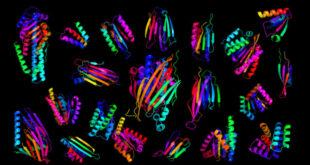Researchers from the University of California at San Francisco (UCSF) have developed a novel therapeutic that can deliver oxygen specifically to under-oxygenated tissues, thereby restoring the contractile function of cardiac cells, which is heavily affected under hypoxic conditions. The study is published in the journal PLoS Biology.

A new oxygen-delivery therapeutic restored the function of oxygen-starved heart tissue in an animal model of global hypoxia.
Under conditions of hypoxia, or low oxygen, a number of physiological changes take place that can have severely negative impacts on human health.
These effects can range from increased risk of breast cancer to impaired cellular function and metabolism across tissue types.
Therefore, the development of pharmacological agents which can improve the delivery of oxygen to these regions and restore function is critical.
The heart is the organ with the highest energy usage and oxygen requirement, and hypoxia can lead to cardiac dysfunction in adults.
Similarly, infants with congenital heart defects must undergo bypass procedures are also highly at risk of hypoxia-induced cardiac damage, prompting the use of a juvenile animal model in this study.
Previously, this issue of oxygen deprivation has been approached using Hemoglobin-based oxygen carriers (HBOCs) which delivers hemoglobin (Hb), the molecule responsible for binding and transporting oxygen in your body, into the bloodstream in order to increase the amount of oxygen which can be circulated.
However, since Hb is not contained within red blood cells in these treatments, it tends to accumulate to toxic levels which can cause kidney damage, as well as release oxygen too readily and not specifically under hypoxic conditions.
To address this need, a team from the UCSF Department of Pediatrics joined forces with Omniox, Inc., a biopharmaceutical company specializing in engineering oxygen-delivery solutions.
They found a protein in the H-NOX family of heme-containing proteins from the bacterium Thermoanaerobacter tengcongensis, which has ultra-high binding affinity for oxygen and low reactivity with nitric oxide, one of the non-specific targets of hemoglobin-based therapeutics.
Upon further modifications, they created OMX-CV, which has a binding affinity for oxygen that allows it to bind the gas such that it will only release when it gets to zones of hypoxia.
The authors used a juvenile lamb model exposed to 10% O2 for 10 minutes to induce acute hypoxia, and then treated them with the OMX-CV, or a vehicle control, after which they examined biomarkers of hypoxia, respiratory and systemic stress, and cardiac output.
Cardiac function was examined by measuring the rate of pumped blood and vascular resistance.
With OMX-CV dosage equivalent to just a 2% increase in oxygen carrying capacity body-wide, the scientists were able to show significantly reduced hypoxia in the cardiac tissue, along with improved contractility.
Emin Maltepe, MD, PhD, a professor of pediatrics and co-senior author of the study predicts a wide range of applications for the technology, forecasting that, “any tissue with compromised blood flow, whether due to trauma, stroke, or heart disease could potentially be targeted by a treatment like this.”
Current follow-up studies being conducted at UCSF are further investigating more specific models to determine if this may be applicable to infants undergoing bypass.
The study of this new therapy has promising results, showing that it can overcome the lack of specificity of current oxygen restoration therapies, and bypass the toxic side-effects of HBOCs.
_____
J. Boehme et al. 2018. Preservation of myocardial contractility during acute hypoxia with OMX-CV, a novel oxygen delivery biotherapeutic. PLoS Biol 16 (10): e2005924; doi: 10.1371/journal.pbio.2005924
 #Bizwhiznetwork.com Innovation ΛI |Technology News
#Bizwhiznetwork.com Innovation ΛI |Technology News



